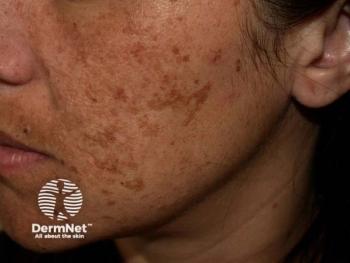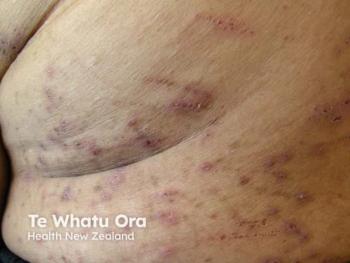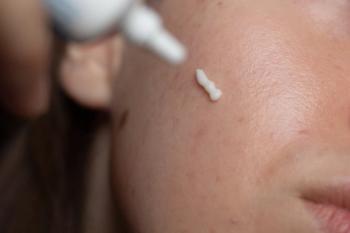
A Head-to-Head Analysis of Conjunctivitis in Atopic Dermatitis Therapies
Key Takeaways
- Abrocitinib showed lower conjunctivitis rates compared to dupilumab, aligning with known safety profiles, and no increase versus placebo, indicating favorable tolerability.
- Dermatology advancements include a preference for oral therapies in psoriasis and complex treatment needs in atopic dermatitis, with emerging therapies targeting novel pathways.
James Song, MD, FAAD, reveals insights on abrocitinib's safety in atopic dermatitis, highlighting lower conjunctivitis rates compared to dupilumab at DERM 2025.
At the
Conjunctivitis is a known adverse event of special interest in patients treated with biologics for AD, especially those targeting IL-4/IL-13 pathways. However, conjunctivitis can also occur in AD patients not on systemic therapies, suggesting it may be a disease comorbidity. Song's analysis focused only on conjunctivitis that emerged after treatment initiation, not cases present at baseline.
Findings showed that patients with more severe disease and older age were more prone to treatment-emergent conjunctivitis. Importantly, the data revealed higher conjunctivitis rates with dupilumab compared to abrocitinib, aligning with their known safety profiles. Moreover, abrocitinib did not show increased conjunctivitis rates versus placebo, reinforcing its favorable tolerability in this regard.
Song also highlighted exciting developments in dermatology. While psoriasis treatment has seen major advances—largely with biologics—many patients prefer oral therapies. A new wave of more effective oral treatments is expected soon. In contrast, AD remains more complex and heterogeneous, often requiring combination therapies. Emerging treatments are targeting novel pathways like OX40, IL-31, and IL-22, with a focus on synergistic combinations.
Other promising areas include hidradenitis suppurativa (HS), where JAK inhibitors show potential even in biologic-refractory patients, especially when treated early. For prurigo nodularis, 2 biologics are approved, with more therapies in development. Lastly, in chronic spontaneous urticaria (CSU), dupilumab’s approval is helping dermatologists reclaim management of the condition, alongside new agents like BTK and C-KIT inhibitors on the horizon.
Newsletter
Like what you’re reading? Subscribe to Dermatology Times for weekly updates on therapies, innovations, and real-world practice tips.


















